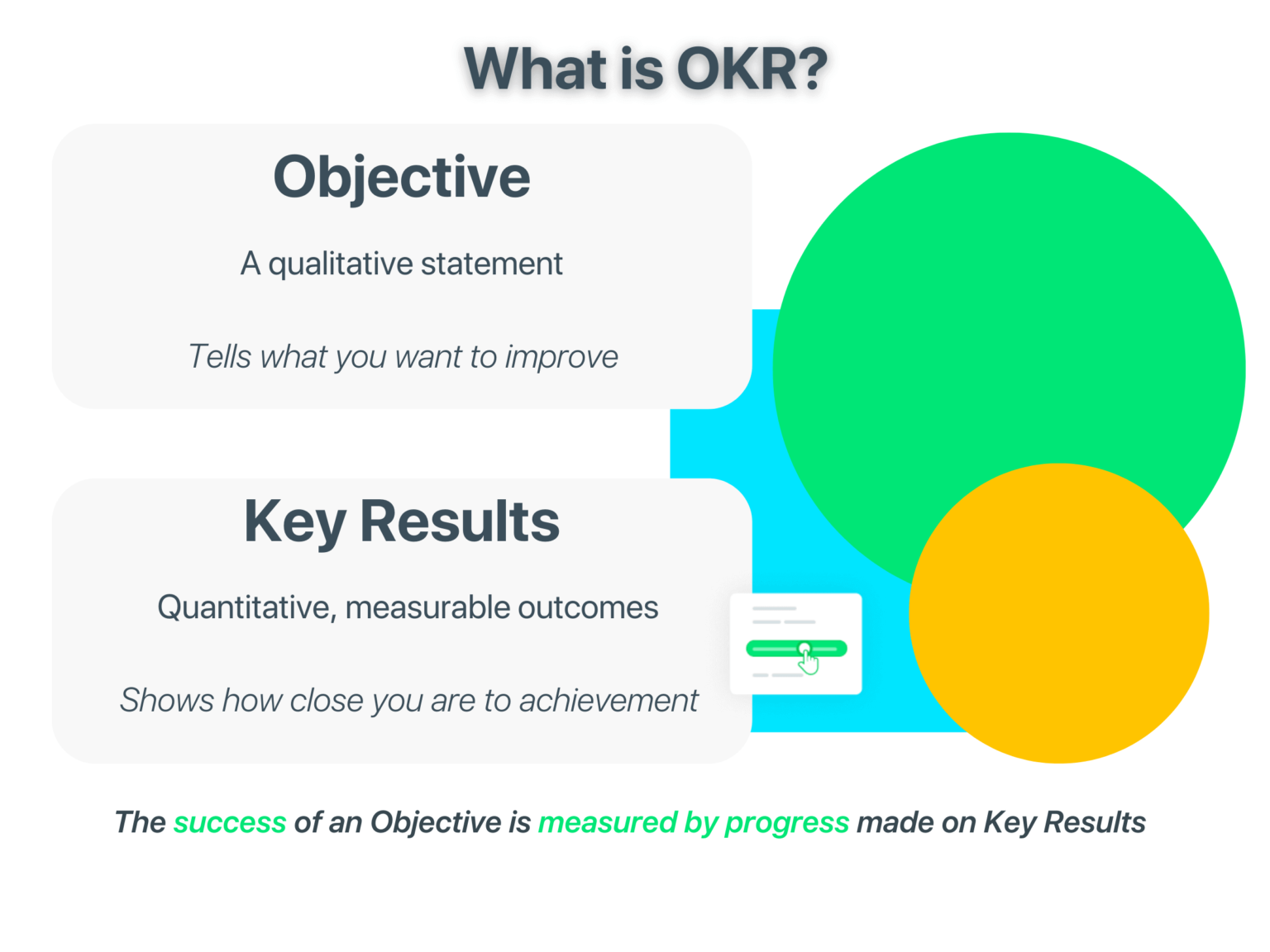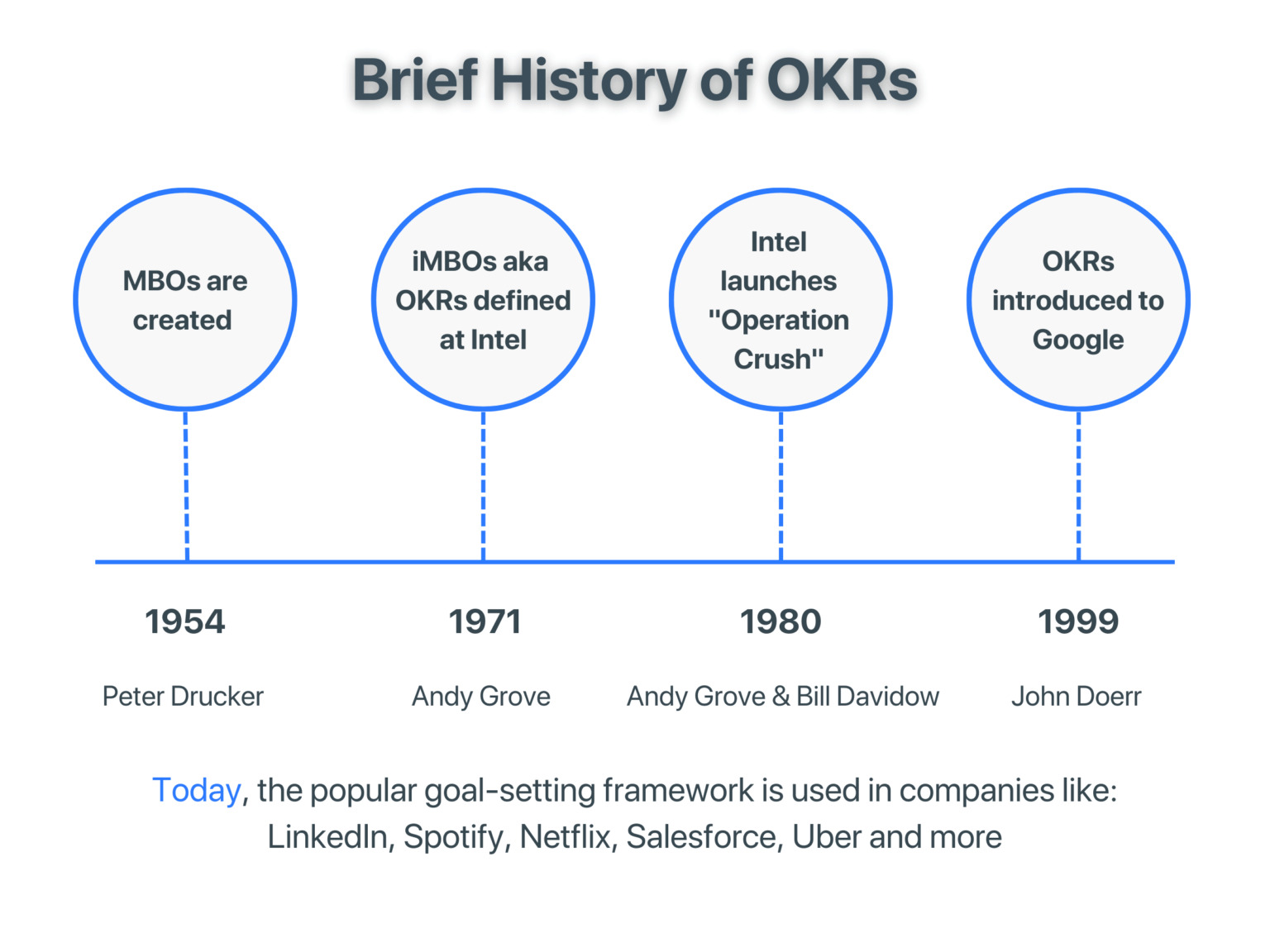
*This article is originally from WEEKDONE
OKR Definition and Meaning
OKR stands for Objectives and Key Results. It is a goal-setting framework that consists of two basic components:
The Objective
is qualitative and reminds you of what you set to improve.
The Key Results
are quantitative, measurable outcomes you need to deliver to help achieve the Objective.

The OKR meaning
The meaning of OKR is different depending on which company level you set them on.
At aTalent, we follow goal alignment best practices – therefore, we recommend setting only Objectives on the company level and both Objectives and Key Results for other levels in your company.
This bottom-up alignment gives teams ownership of the Company Key Results, contributing to the Company Objective as progress is made on team OKRs during the quarter.
Here are the 5 company levels you may have in your organization:
- Company
- Cross-Functional Team
- Department
- Team
- Personal
Who Created OKRs?
The Objectives and Key Results framework didn’t appear all of a sudden, and other goal management techniques had been used before such as MBOs, SMART goals, and KPIs.

In 1954 Peter Drucker formed the technique, Management By Objectives (MBOs), which grew in popularity thanks to its success in helping businesses as well as Drucker’s book, The Practice of Management.
In the 1970s Andy Grove, CEO at Intel, took the idea of Objectives and merged them with Key Results to create what we now know as OKRs. He called them iMBOs (Intel Management by Objectives), however, Objectives were never spoken about without mention of the Key Results.
Within the next few years, John Doerr learned the methodology from Andy Grove and introduced OKRs to Google. Doerr’s simplified formula: I will (Objective) as measured by (this set of Key Results).
As an outcome-driven framework, OKR management famously helped Larry Page and Sergey Brin to take Google to new heights, and thousands of companies have learned to leverage the principles of the method ever since. Today, leaders in LinkedIn, Twitter, Slack, Spotify, Uber, and Microsoft use the OKR methodology to communicate improvement priorities across the company and align the teams to move in the right direction.
How to Write Good OKRs
Writing good Objectives and their driving Key Results takes time, experience, and critical thinking. 📝


OKRs vs KPIs
KPIs
KPI stands for Key Performance Indicators. KPIs are a unit of measure that companies use to track business metrics that reflect performance.
OKRs
OKR stands for Objectives and Key Results – it’s a goal management methodology that encourages businesses to define improvement areas and drive changes.
KPIs don’t tell you what needs to be changed or improved to drive the growth of your business metrics whereas OKRs help you clearly see how your business metrics relate to your daily work.
That isn’t to say your company can’t use KPIs. In fact, many companies use KPIs and OKRs together. OKRs are set alongside KPIs to help measure the impact of your performance metrics.

Wanna know how aTalent OKR took can help your business? Click the button below and book demo now!

Scan QR code to follow WeChat public account
Never miss any talent management information



